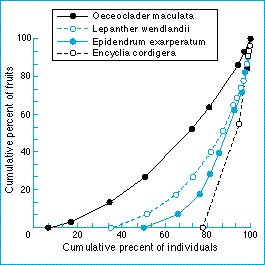Natural selection and variation - How do populations show variation?

Variation in biology can take two meanings:
• Firstly it can refer to the characters of an organism which can vary among individuals at both the phenotypic and the genetic levels.
• Secondly, biologists talk about the variation in the fitness of individuals. For natural selection to take place, there must not only be variation in characteristics: the variation must be for fitness.
It is another condition of natural selection that the characteristics and hence the fitness of organisms is heritable. Not all characteristics of organisms are inherited and natural selection will not adjust the frequency of non-inherited characters. But many are inherited, on these natural selection can potentially work. Since inheritance is produced through genes via the Mendelian process, there must be sufficient genetic variation for natural selection to operate.
Figure: Variation in reproductive success within populations, illustrated by four species of orchid. The graphs plot the cumulative percentage of offspring produced, with the individual plants ranked from the least to the most successful. For example, in Epdendrum exasperatum, the least successful 50% of individuals produce none of the offspring, the next 17% of individuals produce 5% of the offspring, and so on. If every individual produced the same number of offspring the cumulative percentage graph would be the 45 degree line. From Calvo (1990).
| Next |



